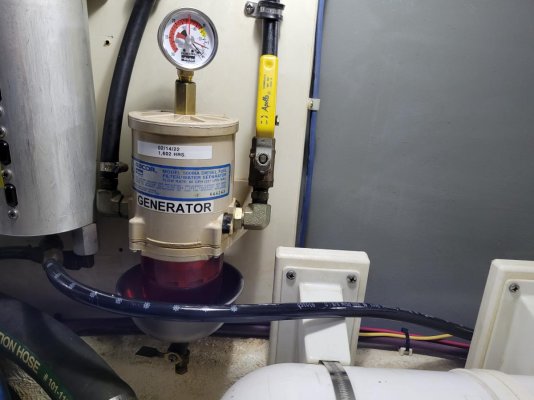diver dave
Guru
- Joined
- Jan 13, 2017
- Messages
- 2,570
- Location
- United States
- Vessel Name
- Coquina
- Vessel Make
- Lagoon 380
Seems easy to bleed off a small amount of diesel to check for water and particles.
But isn’t it true that if the filter is above the tank fuel level, that air will enter the bowl, making up for the lost volume? And that air wont have an acceptable escape path?
So, then is it much preferred that the filter should be mounted lower than the bottom of the tank? My tank bottoms stay dry, but they are very low in the bilge.
But isn’t it true that if the filter is above the tank fuel level, that air will enter the bowl, making up for the lost volume? And that air wont have an acceptable escape path?
So, then is it much preferred that the filter should be mounted lower than the bottom of the tank? My tank bottoms stay dry, but they are very low in the bilge.

